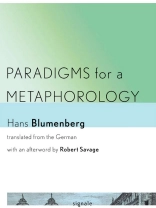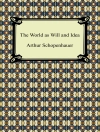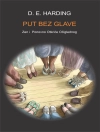W hat role do metaphors play in philosophical language? Are they impediments to clear thinking and clear expression, rhetorical flourishes that may well help to make philosophy more accessible to a lay audience, but that ought ideally to be eradicated in the interests of terminological exactness? Or can the images used by philosophers tell us more about the hopes and cares, attitudes and indifferences that regulate an epoch than their carefully elaborated systems of thought?
In Paradigms for a Metaphorology, originally published in 1960 and here made available for the first time in English translation, Hans Blumenberg (1920-1996) approaches these questions by examining the relationship between metaphors and concepts. Blumenberg argues for the existence of ‘absolute metaphors’ that cannot be translated back into conceptual language. ‘Absolute metaphors’ answer the supposedly naïve, theoretically unanswerable questions whose relevance lies quite simply in the fact that they cannot be brushed aside, since we do not pose them ourselves but find them already posed in the ground of our existence. They leap into a void that concepts are unable to fill.
An afterword by the translator, Robert Savage, positions the book in the intellectual context of its time and explains its continuing importance for work in the history of ideas.
Cuprins
Hans Blumenberg: An Introduction
Part I: History, Secularization, and Reality
1. The Linguistic Reality of Philosophy (1946/1947)
2. World Pictures and World Models (1961)
3. ‘Secularization’: Critique of a Category of Hisotrical Illegitimacy (1964)
4. The Concept of Reality and the Theory of the State (1968/1969)
5. Preliminary Remarks on the Concept of Reality (1974)
Part II: Metaphors, Rhetoric, and Nonconceptuality
6. Light as a Metaphor for Truth: At the Preliminary Stage of Philosophical Concept Formation (1957)
7. Introduction to Paradigms for a Metaphorology (1960)
8. An Anthropological Approach to the Contemporary Significance of Rhetoric (1971)
9. Observations Drawn from Metaphors (1971)
10. Prospect for a Theory of Nonconceptuality (1979)
11. Theory of Nonconceptuality (circa 1975, excerpt)
Part III: Nature, Technology, and Asthetics
12. The Relationship between Nature and Technology as a Philosophical Problem (1951)
13. ‘Imitation of Nature’: Toward a Prehistory of the Idea of the Creative Being (1957)
14. Phenomenological Aspects on Life-World and Technization (1963)
15. Socrates and the objet ambigu: Paul Valery’s Discussion of the Ontology of the Aesthetic Object and Its Tradition (1964)
16. The Essential Ambiguity of the Aesthetic Object (1966)
17. Speech Situation and Immanent Poetics (1966)
Part IV: Fables, Anecdotes, and the Novel
18. The Absolute Father (1952/1953)
19. The Mythos and Ethos of America in the Work of William Faulkner (1958)
20. The Concept of Reality and the Possibility of the Novel (1964)
21. Pensiveness (1980)
22. Moments of Goethe (1982)
23. Beyond the Edge of Reality: Three Short Essays (1983)
24. Of Nonunderstanding: Glosses on Three Fables (1984)
25. Unknown Aesopica: From Newly Found Fables (1985)
26. Advancing into Eternal Silence: A Century after the Sailing of the Fram (1993)
Despre autor
The late Hans Blumenberg was Professor of Philosophy, Emeritus, at the University of Münster and the author of books including The Legitimacy of the Modern Age, The Genesis of the Copernican World, and Work on Myth. Robert Savage is the author of Hölderlin after the Catastrophe.












